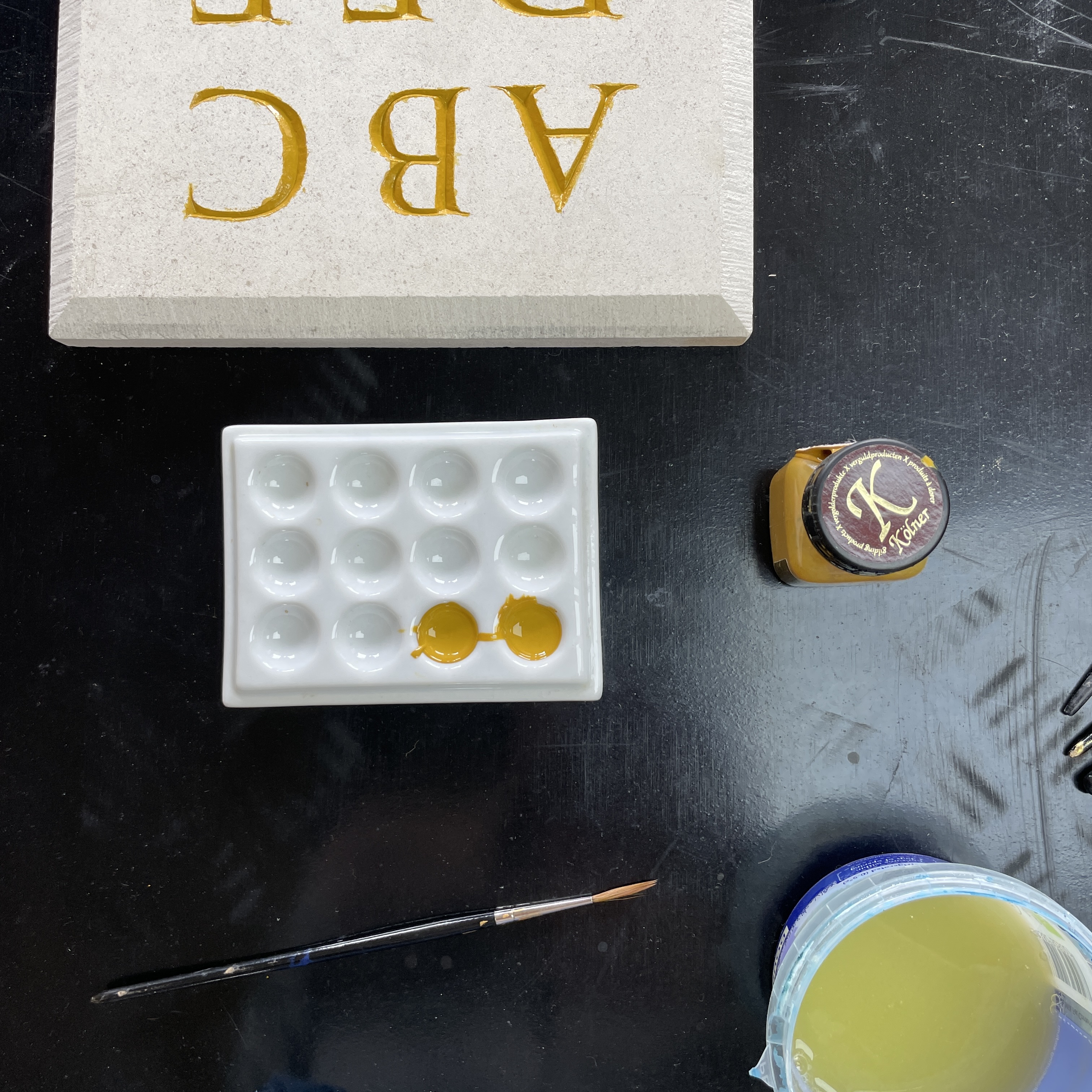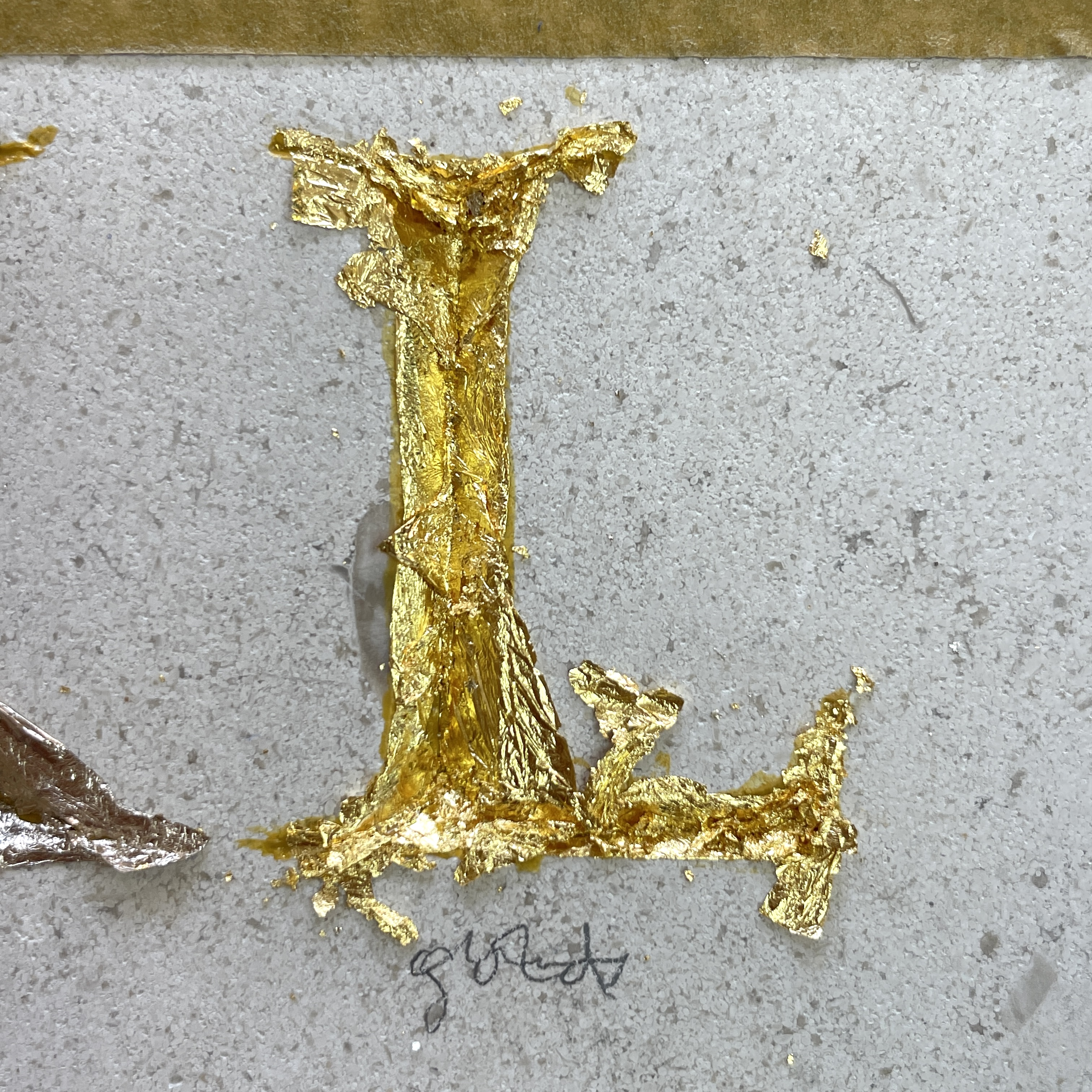




04. Gilding
To complete my Trajan Alphabet we wanted to gild the letters, to make them more legible, as the light colour of the Moleanos limestone didn’t provide enough contrast. I had done a small amount of gilding, but years ago, so the process was pretty new to me.
Fig. 1, 4, 5 Our intention was to try water gilding, however when we applied the size to the stone and let it dry, the gold leaf did not stick well. So we decided to revert back to oil gilding. Fig. 6 shows how the leaf hasn’t fully adhered to the size.
We applied a 3 hour size and left it to dry. The weather was quite hot, so the size only took a short time to ‘go off’, and become tacky to the touch, a ‘dry’ tackiness rather than a ‘wet’ tackiness. As I was gilding 26 letters plus the ampersand I applied the size to the letters in stages, with about 25 minutes between application so that I had time to gild each section. Although this was essential my first time gilding I found the delicacy needed to handle the leaf, move it about and cut it, quite absorbing.
Fig. 7 - 9 Because of the size of the piece we didn't have enough of one gold do to it in the same colour, so we used a mixture of 4 different leafs; gold, champagne gold (22.5 carat), moon gold (22 carat), and palladium. Palladium or platinum is used rather than silver, as silver tarnishes, whereas the latter two don’t. The different leafs did react slightly diffidently when handled and applied, some being lighter and others heavier. The champagne gold has a slightly warmer hue and the moon gold slight cooler, while neither have the brightness of gold, they are closer to the palladium.
The set up for gilding can be seen in Fig. 2, the suede board, knife for cutting the gold, brush for burnishing the leaf into the stone and a smaller brush for transfering the gold from the cutting area to the stone. Fig. 3 shows the leaf cut into useable size pieces.






Gilding the whole piece took be about two days, owning to drying time. Once I was finished we could see where there had been some cross contamination of flexs of gold on other letters, Fig. 10, so I went over and reapplied some gold to the appropriate areas. I sanded back the whole piece to remove the gold that had gone over the edges of the letters. The placement of the different coloured gold was random, but I it think contrasts with the formality of the letterforms in a playful way. I enjoyed gilding and look forward to incorporating it into future pieces. Fig. 11 - 12
05. Watercolour ︎︎︎